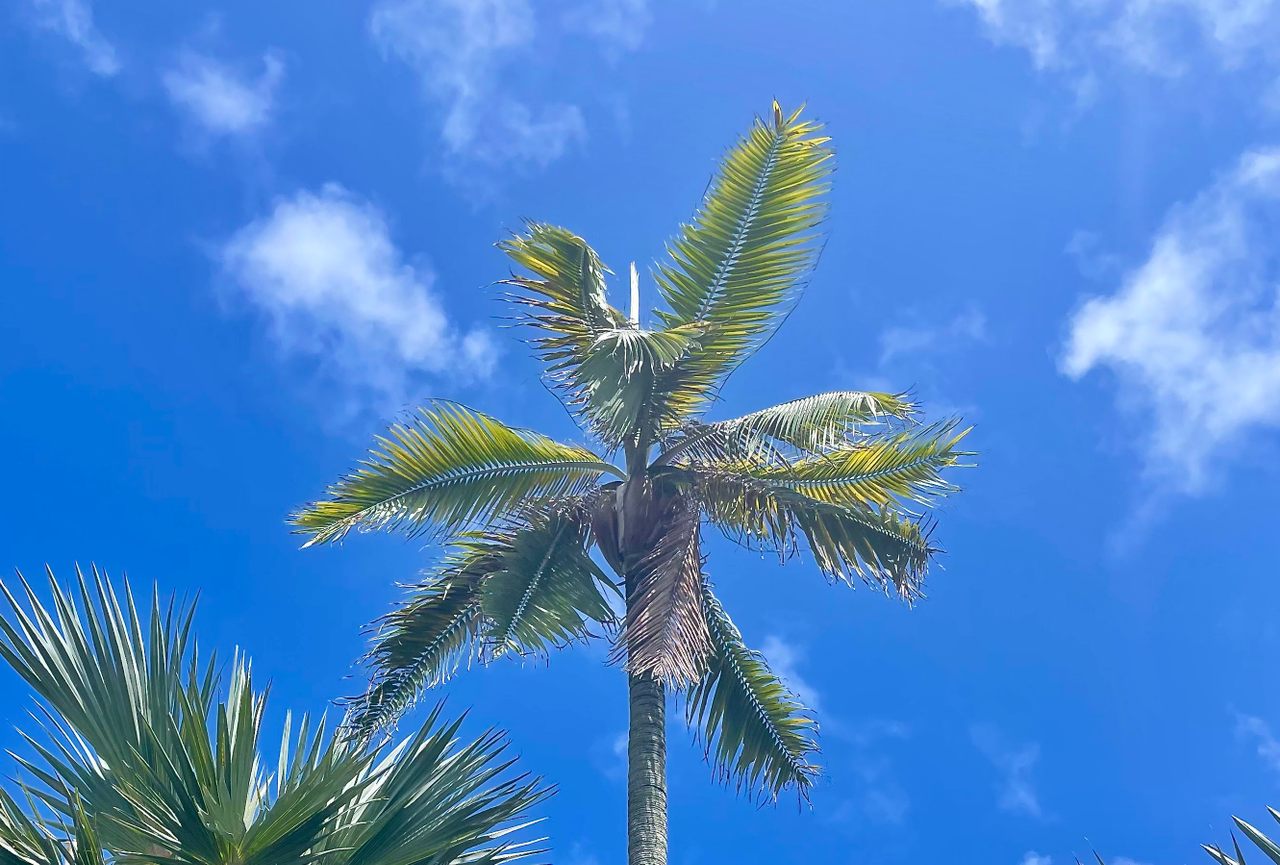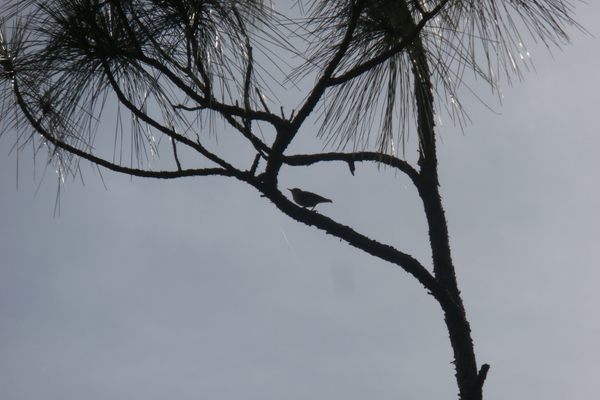This Mauritius Palm Is the Last of Its Kind in the Wild
Dedicated scientists are going to extremes to save this rare plant from extinction.
Vikash Tatayah, conservation director of the Mauritian Wildlife Foundation (MWF), recalls a harrowing moment early in his career, when a colleague scaled a ladder to cut a leaf off one of the rarest palm trees in the world. The tree grew at the bottom of a steep slope on tiny, uninhabited Round Island, about 15 miles north of Mauritius, and the leaf was needed for a genetic study of the palm, the last of its kind alive in the wild.
Tatayah’s colleague had, he recalls, a rather gung-ho approach to the task. He bolted up the ladder as the palm tree swayed back and forth, threatening to snap.
“I was absolutely panicking,” Tatayah recalls. “If that tree had broken we would have effectively driven it to extinction.” Fortunately, more than 20 years later, the Round Island palm is still standing, a symbol of fragile perseverance.
Known to science as Dictyosperma album var. conjugatum, it is one of three critically-endangered variants of hurricane palm native to the Mascarenes, the Indian Ocean islands that include Mauritius. (The other variants are the princess palm, found on Mauritius, and the palmiste bon of nearby Rodrigues Island.) The Round Island hurricane palm’s problems began in the 19th century, when voracious rabbits and goats introduced to the island devastated saplings. In turn, erosion removed the topsoil needed to anchor mature palms during storms.
By 1994, there were only two Round Island palms left standing. That year, devastating Cyclone Hollanda felled one of them. Researchers collected its seeds and germinated them at Ile aux Aigrettes, a coral-island nature reserve just off the southeast coast of Mauritius. There are now 18 mature Round Island palms growing safely there, three of which have produced flowers and fruits in recent years. Despite the success in propagating the variant, Tatayah says visiting the last wild-living tree still fills one with awe.

“It’s lonely, very lonely, as you can imagine,” he says. That solitude is an unfortunate consequence of the species’s lifecycle: Male and female flowers on a hurricane palm emerge months apart. That wouldn’t be a problem in a forest of palms, where flowers on different trees emerge at different times to be cross-pollinated by wind, birds, insects, or geckos. When there is only one tree left, however, something botanists call asynchrony can occur: The female flowers emerge when the male flowers are no longer there.
Hence the need for human intervention. And it’s becoming more urgent. The team has no idea how old the Round Island palm is, but it was already a mature tree in the 1970s.
“We’re basically doing as much as we can while it’s still alive,” says Cacey Cottrill, a flora restoration biologist with the Durrell Wildlife Conservation Trust, one of MWF’s partners in Round Island conservation projects.
Hand pollination to save the Round Island palm variant requires a considerable amount of hand carrying. Beginning each August, when the male flowers on the Round Island palm first emerge, Cottrill transports pollen collected from it to the propagated palms on Ile aux Aigrettes. Then she takes pollen from those palms back to Round Island, where no fruit has been produced since 1994, when the second-to-last palm was felled.

The actual collection can be challenging, requiring a tall ladder, extendable pruning shears, and nerve—and some unexpected equipment.
“We had to use binoculars to see if the flowers looked ready enough to be cut,” Cottrill says of the 2022 collection. Climbing the ladder while gripping the pruning shears, she then positioned herself carefully to cut the inflorescence, or flower heads, at the top of the nearly 30-foot-tall palm.
“I was trusting a few people to hold the ladder in place so that it wasn’t leaning on the hurricane palm,” Cottrill says. “It was a process of trying not to fall off the ladder [or be] hit by fronds, and collecting the right inflorescence. … It’s very difficult to catch them.”
Each inflorescence weighs about a pound, and travels first by boat from Round Island to Mauritius, by car across the island, and then aboard another boat to Ile aux Aigrettes. There, at last, the male flowers of the Round Island survivor are rubbed on the female flowers of the cultivated palms.
This intensive conservation effort has become a labor of love for the team, and every new sapling produced is cause for celebration, because things could have turned out very differently. If the Round Island palm is lonely, there’s another Mauritian palm that’s even lonelier.

The very last Hyophorbe amaricaulis palm grows in the Curepipe Botanical Garden on Mauritius. Like the Round Island palm, its male and female flowers emerge at different times. But, unlike the Round Island palm, there are no young cultivated palms for it to share its pollen with.
Reputed to be the world’s rarest plant, the Curepipe palm is thought to be more than 150 years old. Part of its trunk, which is supported by a metal frame, shows signs of disease. The tree could die, and the species become extinct, at any time.
By contrast, the Round Island palm variant still has a chance. “This palm can mature quickly, in under 10 years, when grown in good conditions,” says University of Mauritius ecologist Vincent Florens. He supports moving hand-pollinated offspring from Ile aux Aigrettes to “mature on Round Island, increasing the chances of pollination and seed production in situ.”
Indeed, bringing Round Island palms back to their native island is one of the ultimate goals of the conservation team. But progress is slow. Although the goats and rabbits have been removed, their impact is still felt: The island lacks the shade needed to shelter young hurricane palms effectively. Still, Tatayah, Cottrill, and their colleagues persevere, and not just to save the palm.
Palm trees are vital to the ecology of a place like Round Island, says Tatayah. They provide nectar and pollen for the island’s unique geckos and skinks. When the leaves fall they create deep leaf litter for the nests of seabirds such as wedge-tailed shearwaters and white-tailed tropicbirds.
“We need to get to the stage where we are having hundreds, if not thousands, of the palms on Round Island,” Tatayah says.
Cottrill shares that vision—a “magic moment” she calls it—when young palms painstakingly raised from seed finally take root and flourish on Round Island, and their ancestor palm is no longer lonely.






















Follow us on Twitter to get the latest on the world's hidden wonders.
Like us on Facebook to get the latest on the world's hidden wonders.
Follow us on Twitter Like us on Facebook